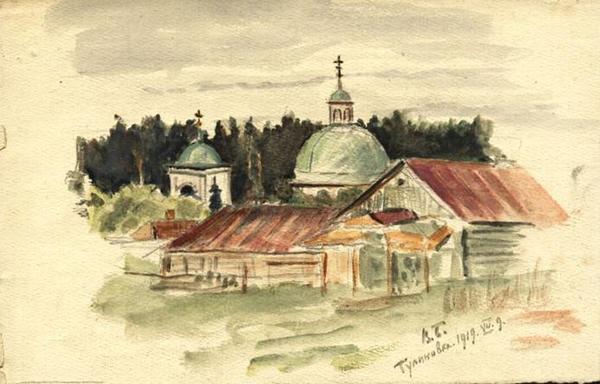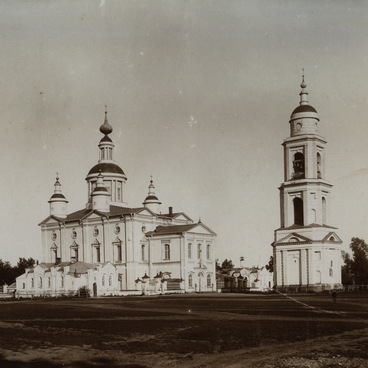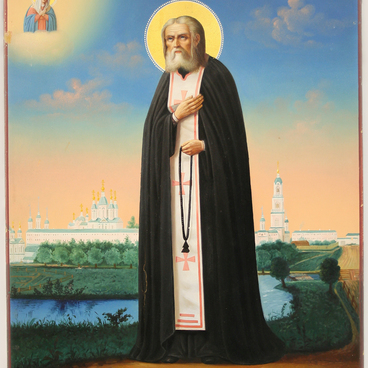The portrait of the hegumeness, -Mother Superior of the Tulino-Sofijskiy Monastery- was brought to the Tambov Ethnography Museum collection from Tulinovka village in 1927. The Head of the Pokrovsko-Prigorodnaya volost (district) militia of the Tambov ujezd (county) and province offered the provincial museum to collect church valuables from the vault together with the ashes of the lady of the manour, Sophia Tulinova. Thus, the forged metal cross, the ivory rood, and the portraits of hegumenesses Pheophania and Estomia, painted with oil on the canvas, got into the museum.
The artist who painted the portrait of Mother Superior is unknown. Nor was it possible to find out the name of the heroine. The estimated date of the painting is 1900. The artist portrayed a woman with prayer beads in her hands, dressed in a modest cowl and a black klobuk. It consists of a coif — a top hat with the top cut off, and the cloth of the same colour attached to it. The klobuk covers the hegumeness’s shoulders and back like a seamless square-cut mantle. Instead of klobuks nuns could wear black wimples, — head kerchiefs with a cut out for a face that draped the breast and back. The skoufos, a soft black hat, was put on such head kerchiefs.
The artist who painted the portrait of Mother Superior is unknown. Nor was it possible to find out the name of the heroine. The estimated date of the painting is 1900. The artist portrayed a woman with prayer beads in her hands, dressed in a modest cowl and a black klobuk. It consists of a coif — a top hat with the top cut off, and the cloth of the same colour attached to it. The klobuk covers the hegumeness’s shoulders and back like a seamless square-cut mantle. Instead of klobuks nuns could wear black wimples, — head kerchiefs with a cut out for a face that draped the breast and back. The skoufos, a soft black hat, was put on such head kerchiefs.





